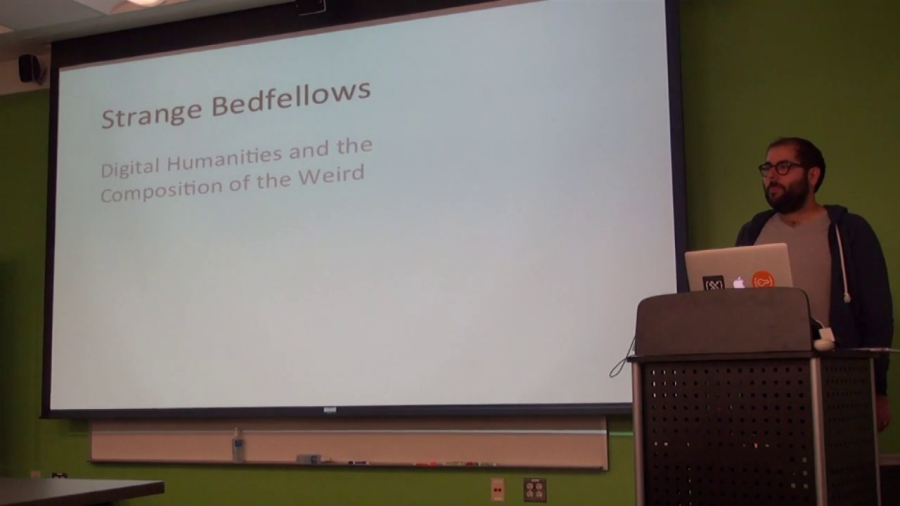I’m here at MITH today, and I wanted to talk a little bit about digital humanities from my position as an interested outsider. I’ve always kept a finger in academia, at first through game studies and people studying video games, and more recently through electronic literature and those fields. I’m not going to go into a “what is it?” debate because I know everyone who’s in digital humanities is very tired of those, but we know when we see it, right?
Archive (Page 3 of 4)
We want to contextualize the bots for the audience of the ELC3, people who study and are interested in electronic literature. To frame bots as a kind of electronic literature. To link to the live bot on Twitter. But we also want to offer materials so those bots can be studied. We want to preserve it for future generations. So what does this mean, exactly?
I wasn’t really sure what to talk about and so a while ago I wrote this bot called Bots r cool to try to figure out why we all like bots, and this presentation is the top 20 of those off of Favstar plopped into OutSlide because I really just didn’t want to do any work at all.
Why did this happen now? We’ve had update_with_media on Twitter via the API since August 2011, so you could upload pictures for a long time. We got a “rich photo experience” in September [2013]. […] But the short answer is I don’t know why we’ve had this capability for a year and nobody’s done anything with it until now in terms of transforming image bots.
The point being that this isn’t just some random thing about Rube Goldberg machines, it’s also about changes in art. It’s a broad pattern that happens whenever there’s a major technological shift, at least for the last hundred years. You get these useless machines that self-justify.
I guess the two questions that I ask myself when I’m making a bot are what resources and corpora should I use, and how can I manipulate this in interesting ways to come up with tweets that are more signal than noise. A lot of the time it’s actually really hard to generate language that is signal and not noise. And I aim to get a lot of signal in my bots.
I made a bot called @corruptum, and he uses a lot of copyrighted content in his corpus, so I was wondering whether it was legal and whether its use qualified as Fair Use.
You don’t know who they are. It gives you no handles, no identifying information, no location. All you know is they’re typing in English and that is how they’re feeling at this general moment in time. And then it just sends them this tweet. It’s one tweet over and over again: “Someone over here wanted you to know that you’re not alone.”


The Web We Lost
I can have my independent blog, but if it’s not being promoted through one of these networks, nobody sees it. If it’s not being injected in one of these streams in a format that’s consumable in one of these streams, that’s compatible with what they call native advertising, which is stream items that are ads, then it doesn’t get seen.